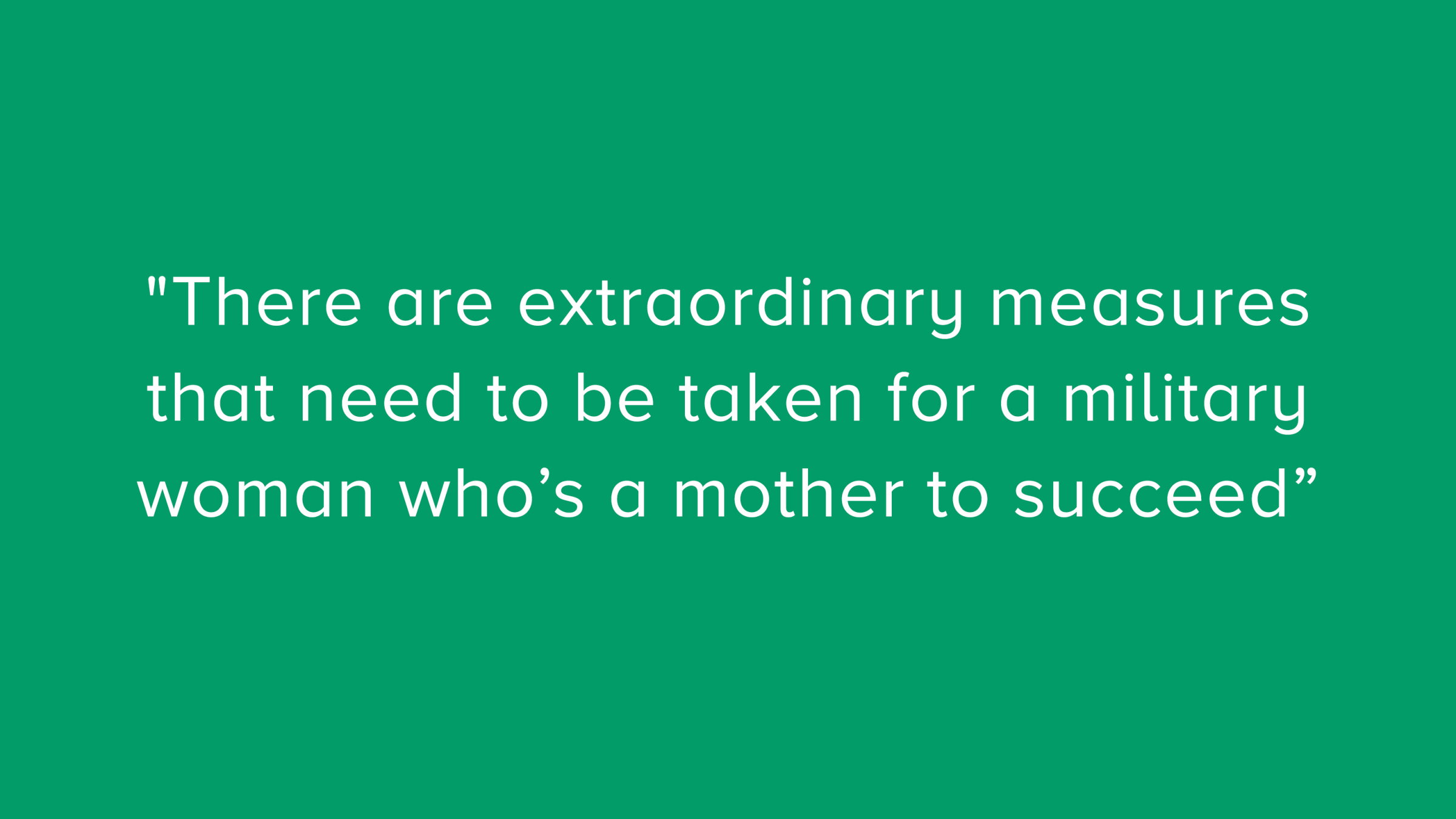
Defense Secretary Ash Carter announced in December that all combat positions will be open to women, effective January 2016. That means 220,000 jobs previously exclusive to men—like infantry roles and those within some special operations units—are now available to qualifying women.
As of September 2015, women accounted for 15.3% of active-duty personnel in the military. However, while women may now be eligible for all available positions—and potentially even the draft—that doesn’t mean that the support systems necessary for them to thrive in these roles exist.
“Joining the Army was one of the best things I’ve done,” says Dr. Elspeth Cameron Ritchie, a retired Army colonel and forensic psychiatrist focusing on mental and women’s health issues in the military. “They paid for medical school so I graduated without debt, which really gave me a leg up,” she says. “I think if we can turn the military into a place where women feel they are valued, that will help.”
Read more: Marine Veteran: Drafting Women is Key to Ending Gender Discrimination
Here’s what Ritchie and another high-ranking retired military member say needs to change before many women can realistically see the military as a viable career option.
1. Leadership personnel require further training to systematically prevent harassment and discrimination
“People in leadership positions need to understand that what they say and do impacts the ability for women to do their jobs,” says former Commander Darlene Iskra of the U.S. Navy. “These women want to be there and should be treated with respect.”
She recalls an incident early on in her Navy career, when an enlisted male publicly cat-called her. Her colleagues noticed the incident, and the man was disciplined immediately. “That’s what we need from leadership, nipping things in the bud and not allowing those kind of incidents to happen,” she says.
That kind of response is far from universal. In 2014, 22% of active-component women reported having been sexually harassed, and 4.9% of women said they were sexually assaulted, according to a RAND National Defense Research Institute study. Iskra says there needs to be additional training at all levels to ensure that women are welcomed and treated equally in all divisions and at all levels.
Read more: ‘Let’s All Make a Conscious Choice to Rise Above Gender Bias’
2. More support is required for military moms

Being a mother in the military is hugely difficult to balance, says Iskra. “There are extraordinary measures that need to be taken for a military woman who’s a mother to succeed,” she says. “I’ve found many women who are very senior in the military and were moms have had to outsource cleaning, laundry and childcare if they can afford it—or rely on a stay-at-home dad.” But not every woman has the means or opportunity to take those measures—or wants to spend so much time away from her family. “I think that alone will prevent a lot of women from going for those combat jobs,” says Iskra.
3. Women’s reproductive health must be seen as a priority
“Attention paid to women’s healthcare needs is spotty,” says Ritchie. There are difficulties accessing basic supplies like pads or tampons while on deployment, and access to contraceptives that can suppress the menstrual cycle is also spotty while overseas—especially in remote areas, she says. In a 2013 study, one-third of the surveyed military women reported that they were unable to access their preferred birth control method for deployment, and 41% of women requiring refills said they found them difficult to obtain.
“A lot of people don’t like to talk about this subject, but women of reproductive age menstruate,” says Ritchie. “We need to make sure they have what they need.” She adds that women don’t always feel comfortable talking about their health needs because they risk being seen as “other” for having those issues. “You don’t want to be seen as someone who has ‘special needs,'” she says. “You just want to fit in.”
Read more: How I Ended My Toxic Relationship with Stress
4. Quality sanitation must be prioritized during deployments
“Just about every female service member I know pays a lot of attention to bathrooms,” says Ritchie, who notes that they may not have access to a gender-specific bathroom or want to deal with the logistics of constantly removing their heavy gear. A 2011 report on women serving in Afghanistan and Iraq links these very issues to the fact that 48% of women reported that symptoms of vaginitis and UTIs compromised their duties during deployments, and 27% reported lost duty time due to their symptoms.
“This isn’t rocket science,” says Ritchie. “It’s just practical. The military deals with logistics all the time—we send troops and supplies around the world. Why can’t we have bathrooms?”
Women still make up such a small percentage of the military—and many phase out due to the reasons cited above (along with injury and motherhood), says Ritchie. The opening of new job opportunities may be the first step of many, it seems, before women will be compelled to enlist in greater numbers.
More Must-Reads from TIME
- Donald Trump Is TIME's 2024 Person of the Year
- Why We Chose Trump as Person of the Year
- Is Intermittent Fasting Good or Bad for You?
- The 100 Must-Read Books of 2024
- The 20 Best Christmas TV Episodes
- Column: If Optimism Feels Ridiculous Now, Try Hope
- The Future of Climate Action Is Trade Policy
- Merle Bombardieri Is Helping People Make the Baby Decision
Contact us at letters@time.com